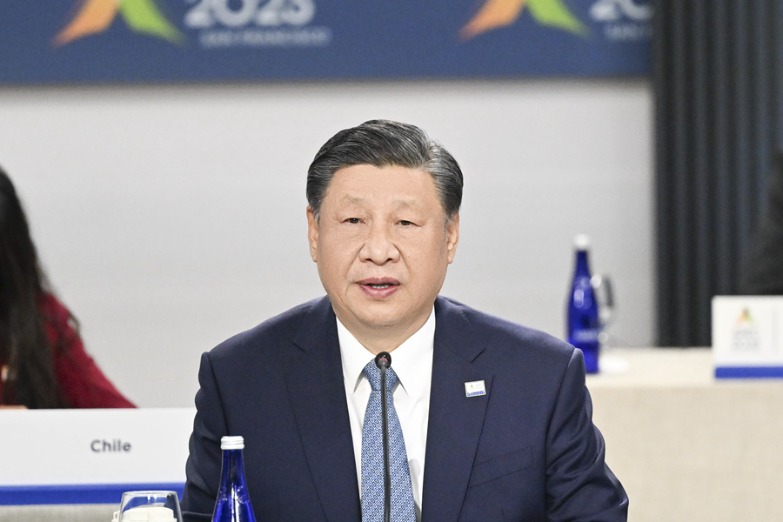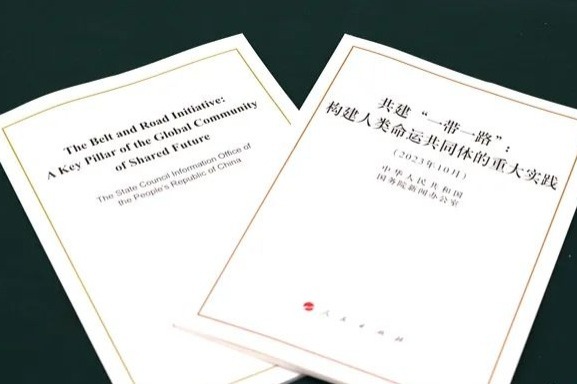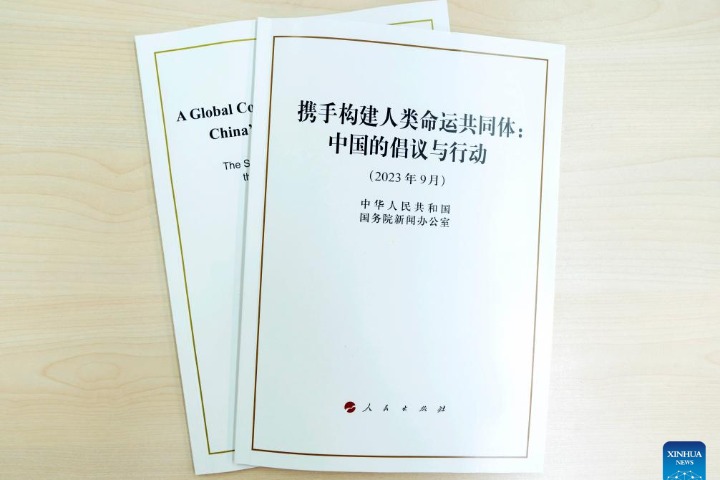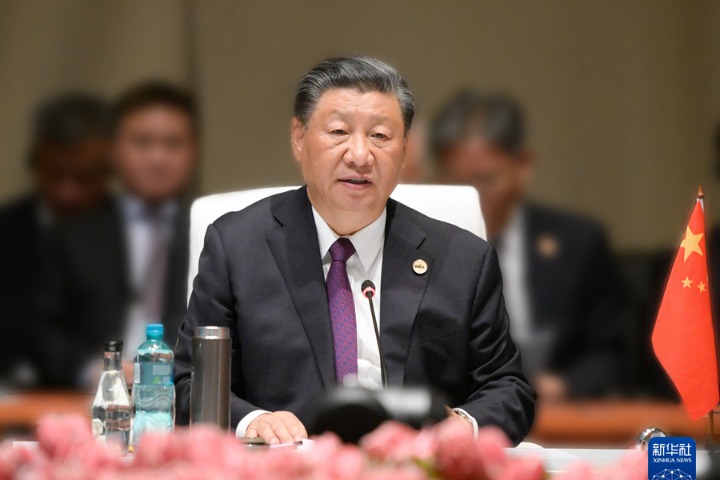中共中央 国务院关于完整准确全面贯彻新发展理念做好碳达峰碳中和工作的意见(双语全文)
新华网 2021-10-25 09:44

六、加快推进低碳交通运输体系建设
VI. ACCELERATING THE CONSTRUCTION OF A LOW-CARBON TRANSPORTATION SYSTEM
(十四)优化交通运输结构。加快建设综合立体交通网,大力发展多式联运,提高铁路、水路在综合运输中的承运比重,持续降低运输能耗和二氧化碳排放强度。优化客运组织,引导客运企业规模化、集约化经营。加快发展绿色物流,整合运输资源,提高利用效率。
14.Improving the transportation structure. In an accelerated effort to put in place an integrated multi-dimensional transportation system, we will vigorously develop multimodal transportation and raise the proportion of rail and water transportation to achieve a sustained reduction in energy consumption and the CO2 emissions intensity in the transportation sector. The organization of passenger transportation should be improved, and passenger transportation enterprises should be guided toward larger-scale and more intensive operations. Green logistics will be developed more rapidly, and transportation resources should be integrated to ensure higher efficiency.
(十五)推广节能低碳型交通工具。加快发展新能源和清洁能源车船,推广智能交通,推进铁路电气化改造,推动加氢站建设,促进船舶靠港使用岸电常态化。加快构建便利高效、适度超前的充换电网络体系。提高燃油车船能效标准,健全交通运输装备能效标识制度,加快淘汰高耗能高排放老旧车船。
15.Encouraging the use of energy-conserving and low-carbon transportation vehicles. We need to develop new-energy and clean-energy vehicles and vessels more rapidly, promote intelligent transportation, move forward with the electrification of railways, push forward construction of hydrogen refueling stations, and make the use of onshore power as a routine practice for vessels approaching ports. We need to have an appropriate degree of forward planning as we move faster to build a convenient, efficient network of battery charging and swapping facilities. We need to raise energy efficiency standards for fossil fuel vehicles and vessels, improve the energy efficiency labeling system for transportation vehicles and equipment, and move faster to eliminate old, energy-intensive, and high-emission vehicles and vessels.
(十六)积极引导低碳出行。加快城市轨道交通、公交专用道、快速公交系统等大容量公共交通基础设施建设,加强自行车专用道和行人步道等城市慢行系统建设。综合运用法律、经济、技术、行政等多种手段,加大城市交通拥堵治理力度。
16.Encouraging low-carbon means of transportation. We need to accelerate the development of urban rail transit, bus lanes, bus rapid transit, and other forms of large-capacity public transportation and strengthen the development of bike lanes, pedestrian walkways, and other facilities for slow urban transportation systems. Legal, economic, technical, administrative, and other means will be comprehensively utilized to tackle urban traffic congestion.
七、提升城乡建设绿色低碳发展质量
VII. IMPROVING THE QUALITY OF GREEN AND LOW-CARBON DEVELOPMENT OF URBAN AND RURAL AREAS
(十七)推进城乡建设和管理模式低碳转型。在城乡规划建设管理各环节全面落实绿色低碳要求。推动城市组团式发展,建设城市生态和通风廊道,提升城市绿化水平。合理规划城镇建筑面积发展目标,严格管控高能耗公共建筑建设。实施工程建设全过程绿色建造,健全建筑拆除管理制度,杜绝大拆大建。加快推进绿色社区建设。结合实施乡村建设行动,推进县城和农村绿色低碳发展。
17.Promoting low-carbon transformation in urban and rural development and management mode. Green and low-carbon requirements must be applied to every link of urban and rural planning, development, and management. We will promote the development of city clusters, develop urban ecological corridors and ventilation channels, and promote afforestation in urban areas. The gross floor area for buildings in urban will be set at a reasonable level, and strict limits will be enforced on public buildings with high energy consumption. We need to ensure green building practices are applied throughout the construction process, improve the management system for the demolition of buildings, and avoid demolition and construction on a large scale. The development of green communities will be accelerated. In comprehensively advancing rural development initiatives, we need to promote the green and low-carbon development of county towns and rural areas.
(十八)大力发展节能低碳建筑。持续提高新建建筑节能标准,加快推进超低能耗、近零能耗、低碳建筑规模化发展。大力推进城镇既有建筑和市政基础设施节能改造,提升建筑节能低碳水平。逐步开展建筑能耗限额管理,推行建筑能效测评标识,开展建筑领域低碳发展绩效评估。全面推广绿色低碳建材,推动建筑材料循环利用。发展绿色农房。
18.Vigorously promoting energy-conserving and low-carbon buildings. We must continuously raise energy conservation standards for new buildings and accelerate the large-scale development of ultra-low energy, near-zero energy, and low-carbon buildings. We need to advance energy conservation retrofits of urban buildings and municipal infrastructure and ensure buildings consume less energy and emit less carbon. We will gradually introduce energy consumption caps as well as energy efficiency assessment and labeling for buildings, and we need to conduct low-carbon development assessments in the construction industry. We will comprehensively promote green and low-carbon building materials and promote the recycling of building materials. We will also encourage the development of green housing in rural areas.
(十九)加快优化建筑用能结构。深化可再生能源建筑应用,加快推动建筑用能电气化和低碳化。开展建筑屋顶光伏行动,大幅提高建筑采暖、生活热水、炊事等电气化普及率。在北方城镇加快推进热电联产集中供暖,加快工业余热供暖规模化发展,积极稳妥推进核电余热供暖,因地制宜推进热泵、燃气、生物质能、地热能等清洁低碳供暖。
19.Moving faster to improve the energy consumption structure of buildings. The use of renewable energy in buildings will be promoted, and the conversion to electric and low-carbon energy in buildings should be accelerated. We will launch rooftop photovoltaic initiatives and greatly increase the electrification rate for heating in buildings, domestic water heating, and cooking. We will move more rapidly to advance combined heat and power (CHP) central heating in cities and towns in northern China and to promote the large-scale application of residual heat from industrial processes in heating systems, while taking active and prudent steps to promote heating produced through nuclear waste heat recovery. In addition, we need to advance clean and low-carbon forms of heating such as heat pumps, gas, biomass energy and geothermal energy in light of local conditions.
八、加强绿色低碳重大科技攻关和推广应用
VIII. STRENGTHENING RESEARCH ON GREEN AND LOW-CARBON TECHNOLOGIES AND PROMOTING THEIR APPLICATION
(二十)强化基础研究和前沿技术布局。制定科技支撑碳达峰、碳中和行动方案,编制碳中和技术发展路线图。采用“揭榜挂帅”机制,开展低碳零碳负碳和储能新材料、新技术、新装备攻关。加强气候变化成因及影响、生态系统碳汇等基础理论和方法研究。推进高效率太阳能电池、可再生能源制氢、可控核聚变、零碳工业流程再造等低碳前沿技术攻关。培育一批节能降碳和新能源技术产品研发国家重点实验室、国家技术创新中心、重大科技创新平台。建设碳达峰、碳中和人才体系,鼓励高等学校增设碳达峰、碳中和相关学科专业。
20.Strengthening basic research and research on cutting-edge technologies. We will formulate an action plan to ensure science and technology better support our endeavor to peak carbon dioxide emissions and achieve carbon neutrality and develop a technological roadmap to carbon neutrality. We will continue with the open competition mechanism to select the best candidates to lead research on low-carbon, zero-carbon and carbon-negative technologies and on new materials, technologies, and equipment for energy storage. We need to strengthen research on basic theories and methods concerning the cause and impact of climate change as well as on carbon sinks in ecosystems. We must work toward breakthroughs in cutting-edge low-carbon technologies such as high-efficiency solar batteries, hydrogen production from renewable energy sources, controlled nuclear fusion, and zero-carbon industrial process reengineering. We need to develop key national laboratories, national technological innovation centers, and major scientific and technological innovation platforms for the research and development of energy-saving, carbon-reducing, and new-energy technologies and products. We need to develop a talent pool for the task of peaking carbon dioxide emissions and achieving carbon neutrality and encourage universities and colleges to establish disciplines and majors relevant to peak carbon dioxide emissions and achieve carbon neutrality.
(二十一)加快先进适用技术研发和推广。深入研究支撑风电、太阳能发电大规模友好并网的智能电网技术。加强电化学、压缩空气等新型储能技术攻关、示范和产业化应用。加强氢能生产、储存、应用关键技术研发、示范和规模化应用。推广园区能源梯级利用等节能低碳技术。推动气凝胶等新型材料研发应用。推进规模化碳捕集利用与封存技术研发、示范和产业化应用。建立完善绿色低碳技术评估、交易体系和科技创新服务平台。
21.Speeding up the research, development and dissemination of advanced and applicable technologies. We need to develop smart grid technologies that can support the smooth, large-scale integration of wind and solar power into the grid. We must strengthen research and industrial application of advanced energy storage technologies such as electrochemistry and compressed air energy storage. We also need to advance the research and large-scale application of key technologies for hydrogen production, storage, and application. We will promote energy-conserving and low-carbon technologies such as energy cascading utilization in industrial parks. The research and application of aerogel and other new materials will be strengthened. We will advance research, demonstration and industrial application of technologies of carbon capture, utilization and storage on a large scale. Steps should be taken to establish sound systems for the assessment and trading of green and low-carbon technologies as well as service platforms for scientific and technological innovation.

















 英语点津微信
英语点津微信 双语小程序
双语小程序